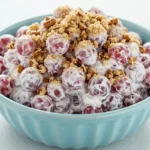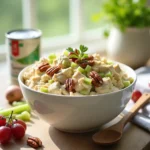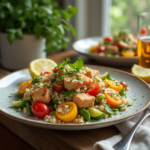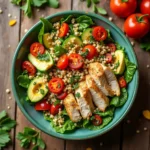Introduction
A good salad can be more than just leafy greens in a bowl. It can be a truly satisfying meal that helps you stay on track with your health goals without sacrificing taste. Many people think salads are plain or leave them hungry, but a well-planned low calorie salad can be the opposite. It can deliver bold flavors, a pleasant crunch, and important nutrients in every bite.
Fresh fruits and vegetables create the base for a healthy salad. Adding lean protein and a light dressing can make it a filling choice that fits into a low carb or balanced diet. When you include ingredients like grilled chicken or beans, you get a source of protein and fiber. This helps you feel full longer, so you avoid constant snacking. With the right mix, you have a meal that feels both hearty and refreshing.
In this guide, we will explore how to create a low in calories salad that will actually keep you content. You will learn about the benefits, the ingredients to choose, and how to mix everything for a tasty result. Whether you are planning a simple garden salad for a quick lunch or a more elaborate dish for meal prep, the steps ahead will help you find your perfect combination of flavor and nutrition. By the end, you will have a reliable method for building a salad that checks all the boxes—light, nourishing, and completely satisfying.
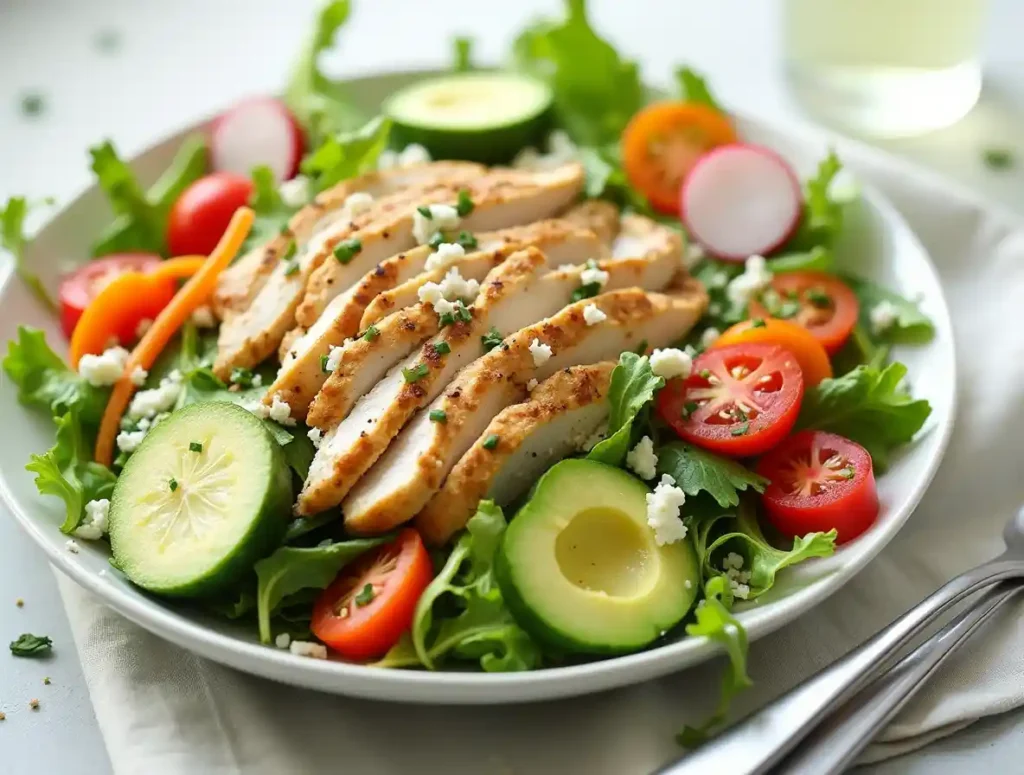
Table of Contents
Key Benefits
Many individuals appreciate a low calorie salad for its unique balance of lightness and substance. It can deliver essential nutrients from leafy greens, vegetables, and lean protein sources without piling on extra calories. A salad that will actually keep you content often includes a variety of textures, flavors, and colors, which increases satisfaction while keeping the calorie count in check.
One of the main advantages is the flexibility to adapt the ingredients to your preferences. You can use crunchy options like romaine lettuce or arugula as a base, add a lean chicken breast or other protein source for staying power, and finish with a dressing that uses wholesome components such as extra virgin olive oil or apple cider vinegar. This combination provides a good source of vitamins A and C, plus fiber and protein that support overall well-being.
When you include lean protein, like grilled chicken or salmon, and pair it with low-calorie ingredients, you get a meal that is both nourishing and delightful. This approach keeps hunger at bay, especially because protein and fiber help maintain fullness. Plus, a salad is a great way to incorporate a wide spectrum of fruits and vegetables into your daily routine. By adjusting the toppings, you can enjoy a satisfying salad for lunch one day and a different version for dinner the next—all without feeling deprived.
Another notable benefit is how easy it is to keep an eye on your overall calorie intake. Preparing a green salad with the dressing on the side lets you control exactly how much you add. You can stay mindful of portion sizes and focus on items that support your goals. Ultimately, a low calorie salad can become a staple in healthy recipes, offering enjoyment, variety, and a strong foundation for better eating habits.
Ingredients
Building a satisfying salad starts with choosing the right salad ingredients. Below is a list of items that can help you create a low calorie salad while keeping plenty of flavor and texture. Feel free to pick and choose based on your preferences.
- Leafy Greens
- Romaine Lettuce: Romaine is crisp, low in calories, and provides vitamins A and C. It’s a good base for a green salad.
- Arugula or Spinach: Both options add a peppery or mild note and carry beneficial nutrients. Mixing different leafy greens creates variety in taste and texture.
- Romaine Lettuce: Romaine is crisp, low in calories, and provides vitamins A and C. It’s a good base for a green salad.
- Colorful Vegetables
- Cucumber: This vegetable adds crunch and hydration. Cucumber salad variations work well if you prefer a simple and refreshing dish.
- Carrot (shredded or thinly sliced): Provides a natural sweetness along with beta-carotene, making your salad pop with color.
- Radish: Has a spicy bite and bright hue, which livens up the plate.
- Tomato: Fresh tomatoes contribute a juicy element and blend with most dressings. A tangy tomato salad is another possibility.
- Cucumber: This vegetable adds crunch and hydration. Cucumber salad variations work well if you prefer a simple and refreshing dish.
- Lean Protein
- Chicken Breast: Cooked chicken breast gives you lean protein and helps keep you full. One medium portion can provide around 18 grams of protein, which is a good boost for muscle and energy. Lean chicken in salads is also a good source of B vitamins.
- Salmon or Shrimp: These seafood choices offer healthy fat and additional protein. If you enjoy high protein meals, shrimp salad or salmon salad versions are worth exploring.
- Beans: Black beans, chickpeas, or other legumes turn a simple bowl into a bean salad loaded with fiber and protein.
- Quinoa: Including a bit of quinoa can lend a hearty texture without too many extra calories per serving. It can also make a quinoa salad packed with complex carbohydrates.
- Chicken Breast: Cooked chicken breast gives you lean protein and helps keep you full. One medium portion can provide around 18 grams of protein, which is a good boost for muscle and energy. Lean chicken in salads is also a good source of B vitamins.
- Tasty Add-Ons
- Avocado: Offers a creamy texture and is a source of healthy fats. An avocado salad can stand alone or blend into your main greens.
- Feta Cheese or Blue Cheese: Adds a tangy, salty punch. You only need a small amount to give a flavorful twist, so you can keep the calorie count in check.
- Sliced Almonds: Supplies crunch and a bit of protein. Almond slices are also a good source of vitamin E.
- Fresh Fruit: Slices of apple, orange segments, or berries can transform your dish into a partial fruit salad, providing natural sweetness and vitamins.
- Avocado: Offers a creamy texture and is a source of healthy fats. An avocado salad can stand alone or blend into your main greens.
- Dressings and Healthy Fats
- Extra Virgin Olive Oil: A drizzle offers richness and a classic taste. Pair with vinegar like apple cider vinegar, rice vinegar, or balsamic vinegar for a balanced dressing that uses simple, wholesome items.
- Greek Yogurt: Creates a light, creamy dressing when combined with lemon or lime juice, garlic, and herbs. You can even mimic a ranch dressing style without overdoing the fats.
- Low Calorie Salad Dressing Options: You can keep it low cal by using a small amount of oil, vinegar, and seasoning. A vinaigrette with red wine vinegar or apple cider vinegar, salt, pepper, and a splash of citrus can be a flavorful solution.
- Extra Virgin Olive Oil: A drizzle offers richness and a classic taste. Pair with vinegar like apple cider vinegar, rice vinegar, or balsamic vinegar for a balanced dressing that uses simple, wholesome items.
- Optional Extras
- Whole-Grain Pasta: Turn your meal into a pasta salad if you want a more filling dish. This variation works well for meal prep.
- Feta crumbles or Blue Cheese sprinkles (in moderation) to accent your salad.
- Lean Meats beyond chicken, like turkey or even thinly sliced cuts for a steak salad, if you want variety.
- Pork Salad: Lightly grilled pork can fit the low-cal theme if used in proper portions.
- Whole-Grain Pasta: Turn your meal into a pasta salad if you want a more filling dish. This variation works well for meal prep.
When you combine these ingredients mindfully, you create a calorie salad that remains high in protein and nutrients. Mix different elements to suit your taste, and remember that a low-calorie salad doesn’t have to be bland. It can be a healthy salad bursting with natural flavors, fiber, and lean protein to keep you content from start to finish.

Instructions
Preparing a delicious, low calorie salad can be straightforward if you follow a few simple steps. Begin by rinsing your chosen leafy greens—romaine lettuce, arugula, or spinach—under cool water, then pat them dry. Slice them into bite-size pieces and set aside in a large bowl.
Next, wash your other vegetables, such as cucumber, tomato, carrot, and radish. Chop or slice them into uniform segments so each forkful has a balanced taste and crunchy texture. Combine these colorful ingredients with your greens.
Select a lean protein, like chicken breast or salmon, to keep you satisfied. Season it lightly with salt, pepper, and herbs, then grill or bake until fully cooked. Slice it thinly and place it on top of the mixed produce. If you prefer a high-protein vegetarian option, consider black beans or quinoa for extra fiber and protein.
To create a light dressing, whisk together two parts vinegar (apple cider vinegar or balsamic vinegar) with one part extra virgin olive oil. Add a touch of lemon or lime juice, plus a sprinkle of salt and pepper. For a creamy ranch dressing alternative, blend Greek yogurt with herbs, garlic powder, and citrus juice. Taste your dressing and adjust seasonings to keep it flavorful yet low in calories.
Drizzle only enough dressing to lightly coat your ingredients, then toss gently. If you want something extra, top your salad with sliced almonds, avocado, or a small amount of feta cheese. Each addition enhances flavor while managing calorie count.
Finally, plate your salad and enjoy. Whether you opt for a classic cobb salad twist, a taco salad with spicy toppings, or a steak salad drizzled with vinaigrette, the main idea remains the same: fresh produce, lean protein, and a dressing that uses simple, wholesome items for a truly satisfying meal.
Pro Tips and Variations
A low cal salad can be prepared in endless ways to keep your routine exciting. Below are some suggestions to help you refine flavors, boost nutrition, and ensure your meal stays satisfying. With a few small adjustments, you can adapt the base recipe into different salads that fit your lifestyle and taste preferences.
- Focus on Texture and Flavor
- Combine crisp vegetables like cucumber, radish, and romaine with softer items such as avocado or roasted peppers. This balance keeps each bite interesting.
- Experiment with herbs and spices. Fresh basil, cilantro, or chopped chives can instantly elevate a green salad.
- Combine crisp vegetables like cucumber, radish, and romaine with softer items such as avocado or roasted peppers. This balance keeps each bite interesting.
- Mind Your Dressing
- If you love creamy textures, opt for a Greek yogurt–based dressing recipe. This provides protein without significantly bumping up the calorie count. Mix it with garlic, lemon juice, salt, and pepper.
- Prefer a tangy bite? Use apple cider vinegar or red wine vinegar combined with extra virgin olive oil. This helps you avoid thick dressings that might sneak in unwanted fats.
- If you love creamy textures, opt for a Greek yogurt–based dressing recipe. This provides protein without significantly bumping up the calorie count. Mix it with garlic, lemon juice, salt, and pepper.
- Boost Protein and Fiber
- For a high protein meal, grill or bake lean chicken breast or salmon. Each serving can supply grams of protein per piece, making it a good source of nutrition.
- Another option: a bean salad with black beans or chickpeas. Not only do they provide a hearty texture, they also contribute fiber and protein for sustained fullness.
- For a high protein meal, grill or bake lean chicken breast or salmon. Each serving can supply grams of protein per piece, making it a good source of nutrition.
- Try Creative Add-Ins
- Chopped fruit can introduce natural sweetness, especially if you enjoy a fruit salad spin. Pineapple, strawberries, or diced apple work well in many combinations.
- Sprinkle sliced almonds or other nuts to add crunch. They also supply healthy fat in moderation.
- If you crave a richer flavor, a small portion of blue cheese or feta cheese can transform an ordinary plate into a more indulgent dish.
- Chopped fruit can introduce natural sweetness, especially if you enjoy a fruit salad spin. Pineapple, strawberries, or diced apple work well in many combinations.
- Customize for Various Diets
- For a low carb twist, emphasize vegetables and high-protein toppings while limiting starchy extras like pasta or croutons.
- If you’re looking for a spinach salad with warm additions, lightly sauté mushrooms or onions and place them over fresh spinach.
- For meal prep, layer sturdy ingredients—like quinoa, beans, or chickpeas—at the bottom of a jar, followed by sliced veggies and leafy greens on top. Keep dressing on the side until you’re ready to serve.
- For a low carb twist, emphasize vegetables and high-protein toppings while limiting starchy extras like pasta or croutons.
- Keep Portion Sizes in Check
- Be careful with toppings like cheese, nuts, or dried fruit, as they can add more calories. Measure them sparingly to enjoy their flavor while staying mindful of your calorie count.
- Using a small spoon or measuring device for dressing helps control how much you drizzle, keeping it low in calories per serving.
- Be careful with toppings like cheese, nuts, or dried fruit, as they can add more calories. Measure them sparingly to enjoy their flavor while staying mindful of your calorie count.
By mixing and matching these ideas, you can create an array of salads—from a refreshing cucumber salad to a hearty shrimp salad—that fit your personal goals and tastes. Over time, you’ll discover your favorite combinations and techniques, ensuring that your low-calorie salad remains both exciting and nourishing.
Serving Suggestions
A satisfying salad can be enjoyed in many ways. One straightforward approach is to serve it as a main meal at lunch or dinner, especially if you choose salad with chicken or salmon as the protein source. This transforms your bowl of greens into a high protein plate that helps maintain steady energy throughout the day. If you are preparing your salad for meal prep, store your dressing on the side so the leaves stay fresh and crisp until you are ready to eat.
For a party or gathering, arrange your ingredients on a large platter. Keep different toppings—like avocado, feta cheese, and sliced almonds—in separate bowls so guests can customize their plates. A self-serve station encourages everyone to choose their favorite mix of veggies, lean protein, and dressing. This is also helpful if certain people need a low calorie salad while others might prefer to add extra extras.
If you are pairing your healthy salad with another dish, try grilled lean chicken or fish on the side. The bright flavors of fresh produce and a light vinaigrette complement simple proteins well. You can even serve a small salad before the main course, priming the palate for bigger flavors without adding many calories.
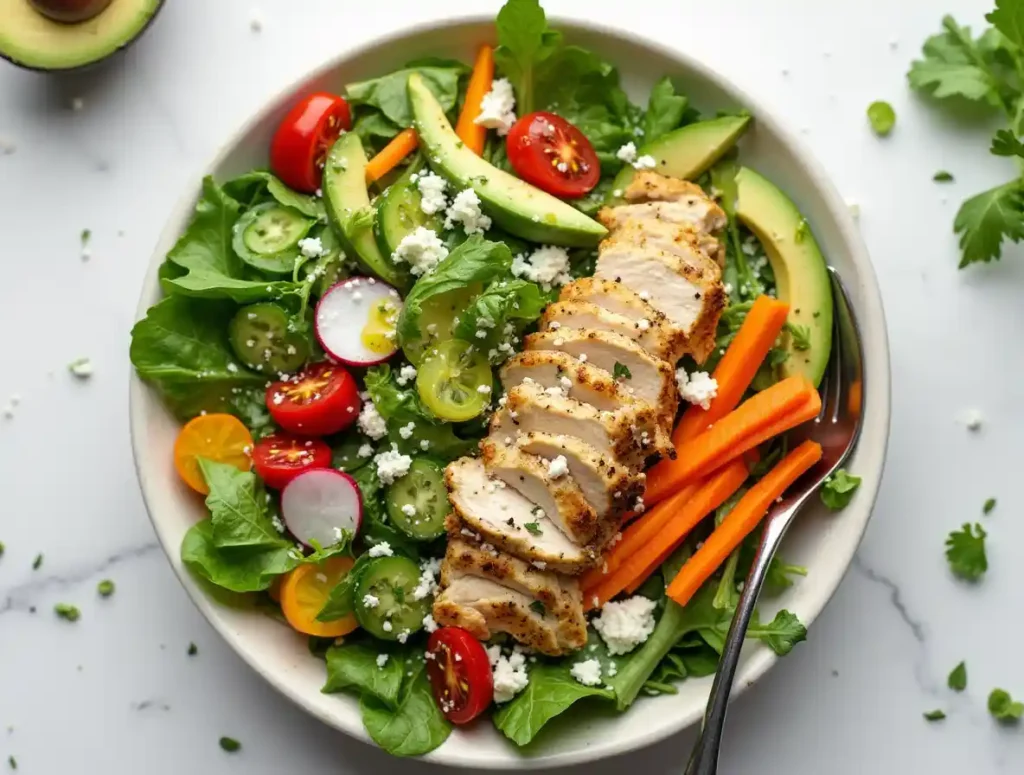
When aiming to stay within a certain calorie count, pay attention to portion sizes. A scoop of beans, a few slices of avocado, or a sprinkling of cheese can help you feel satisfied without overloading on calories. With so many ways to plate and present your salad recipe, you can enjoy a different spin each time. This variety ensures that your low-calorie salad remains a treat rather than a chore, making it a staple you can turn to whenever you want a good salad that will actually keep you feeling content.
Conclusion
A low calorie salad can be a helpful addition to your daily eating plan. It provides variety, color, and plenty of nutrients, all in a form that feels fresh and satisfying. With ingredients like leafy greens, lean protein, crunchy vegetables, and a light dressing, you can enjoy balanced flavors that keep your appetite in check. This approach makes it simpler to manage your calorie intake without losing out on important vitamins, minerals, or protein.
By focusing on simple techniques—such as grilling chicken breast for high protein, pairing crisp lettuce with a drizzle of apple cider vinegar, or experimenting with a creamy Greek yogurt dressing recipe—you can transform basic produce into a meal that truly fits your preferences. Including elements like beans, quinoa, or avocado adds more protein, fiber, and healthy fat, creating deeper flavors that please both the palate and the body.
In the end, a salad that will actually keep you satisfied relies on fresh, high-quality ingredients and balanced portion sizes. Whether you decide to toss in shrimp, steak, or beans, the result can be both low in calories and rich in taste. By rotating your ingredients, you avoid boredom and discover new combinations, ensuring that your calorie salad becomes a regular part of your routine. A salad is a great way to eat more fruits and vegetables, and with the tips you’ve learned, you have the freedom to tweak textures, seasonings, and add-ins so each bowl remains exciting and delicious.
FAQs
Which salad is best for weight loss?
A salad that includes leafy greens, a lean protein source, and a light dressing can work well for weight loss. Options like chicken salad made with grilled chicken breast or a shrimp salad with extra vegetables are filling without being heavy. Add beans or quinoa if you need more protein and fiber. Focus on fresh produce and avoid high-fat ingredients like large amounts of cheese or creamy dressings. A vinaigrette based on apple cider vinegar or balsamic vinegar often keeps the calorie count low while boosting flavor.
Is 500 calories for a salad a lot?
It depends on your overall goals and daily eating plan. A 500-calorie salad can be perfectly reasonable if it supplies a balanced mix of protein, healthy fat, and fiber. For many people, a single meal in the 400–600 calorie range is normal. If you include ingredients like avocado, nuts, and cheese, the calorie total may climb quickly. On the other hand, a salad built around leafy greens, cucumbers, tomatoes, and a small amount of lean protein or Greek yogurt dressing can easily fall under 500 calories. The key is portion control and mindful ingredient choices.
What is low calorie but filling?
Combining foods that are low in calories yet high in protein, fiber, or water content typically makes for a satisfying plate. A low-calorie salad with cucumbers, romaine lettuce, or spinach provides volume without many calories. Add lean protein (like grilled chicken or fish) and a small amount of healthy fat (avocado or sliced almonds) to boost fullness. You can also include beans or quinoa for a good source of protein and fiber. These elements work together to keep you satisfied while still staying low cal.
How to reduce calories in a salad?
Several small adjustments can lower calories without sacrificing taste:
- Opt for Lighter Dressings
- Use vinegar-based dressings with extra virgin olive oil in moderation, or try a Greek yogurt blend with herbs instead of a thick, creamy sauce.
- Use vinegar-based dressings with extra virgin olive oil in moderation, or try a Greek yogurt blend with herbs instead of a thick, creamy sauce.
- Choose Lean Proteins
- Chicken breast, salmon, or beans add protein and keep you feeling satisfied. Trim visible fat from meat and avoid large amounts of cheese or processed add-ons.
- Chicken breast, salmon, or beans add protein and keep you feeling satisfied. Trim visible fat from meat and avoid large amounts of cheese or processed add-ons.
- Limit High-Calorie Toppings
- A controlled sprinkle of feta cheese, blue cheese, or sliced almonds can add taste without going overboard.
- A controlled sprinkle of feta cheese, blue cheese, or sliced almonds can add taste without going overboard.
- Watch Portions
- Even healthy add-ins can pile up calories if you use them too freely. Measure your dressing or keep it on the side so you add only what you need.
- Even healthy add-ins can pile up calories if you use them too freely. Measure your dressing or keep it on the side so you add only what you need.
By following these guidelines, you can create a low-calorie salad that stays delicious, supports weight management, and delivers plenty of vitamins, minerals, and lean protein.

